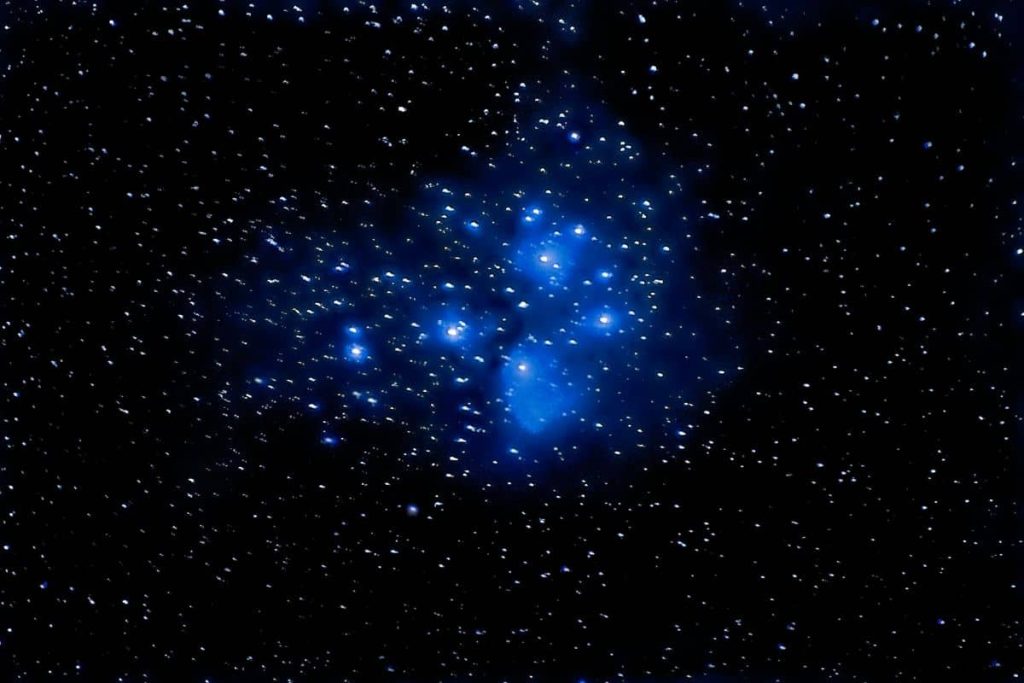Thousands and thousands of brilliant stars make up this globular cluster, Messier 53, captured with crystal clarity in this image from the NASA/ESA Hubble Space Telescope. Bound tightly by gravity, the cluster is roughly spherical and becomes denser towards its heart.
These enormous sparkling spheres are by no means rare, and over 150 exist in the Milky Way alone, including Messier 53. It lies on the outer edges of the galaxy, where many other globular clusters are found, almost equally distant from both the centre of our galaxy and the Sun.
Although they are relatively common, the famous astronomer William Herschel, not at all known for his poetic nature, once described a globular cluster as “one of the most beautiful objects I remember to have seen in the heavens”, and it is clear to see why.
Globular clusters are much older and larger than open clusters, meaning they are generally expected to contain more old red stars and fewer massive blue stars. But Messier 53 has surprised astronomers with its unusual number of a type of star called blue stragglers.
These youngsters are rebelling against the theory of stellar evolution. All the stars in a globular cluster are expected to form around the same time, so they are expected follow a specific trend set by the age of the cluster and based on their mass. But blue stragglers don’t follow that rule; they appear to be brighter and more youthful than they have any right to be.
Although their precise nature remains mysterious these unusual objects are probably formed by close encounters, possibly collisions, between stars in the crowded centres of globular clusters.
Miles y miles de estrellas brillantes forman el cúmulo globular Messier 53, captadas con claridad cristalina en esta imagen del Hubble. Unido estrechamente por la gravedad, el cúmulo es más o menos esférico y se vuelve más denso hacia su centro. Esta imagen es una composición de múltiples imágenes tomadas en longitudes de onda de luz visible e infrarroja.
Descubierto por el astrónomo alemán Johann Elert Bode en 1775, M53 se encuentra a 59.700 años luz de distancia, uno de los cúmulos globulares más distantes de la Tierra. Se observa mejor en mayo, tiene una magnitud aparente de 8,3 y se puede ver a través de un pequeño telescopio en la constelación Coma Berenices. Instrumentos más grandes resolverán las estrellas individuales del cúmulo.
Los cúmulos globulares son mucho más antiguos y más grandes que los cúmulos abiertos, por lo que generalmente se espera que contengan más estrellas rojas viejas y menos estrellas azules jóvenes. Pero Messier 53 ha sorprendido a los astrónomos con su número inusual de un tipo de estrella llamada rezagada azul.
Creemos que todas las estrellas de un cúmulo globular se forman aproximadamente al mismo tiempo, por lo que esperamos que tengan aproximadamente la misma edad. Pero las rezagadas azules parecen ser más brillantes y más jóvenes de lo que deberían ser.
Aunque su naturaleza precisa sigue siendo un misterio, estos objetos inusuales probablemente se formaron por encuentros cercanos, posiblemente colisiones, entre estrellas en los centros abarrotados de cúmulos globulares como M53.
Fuente: ESA/Hubble & NASA


